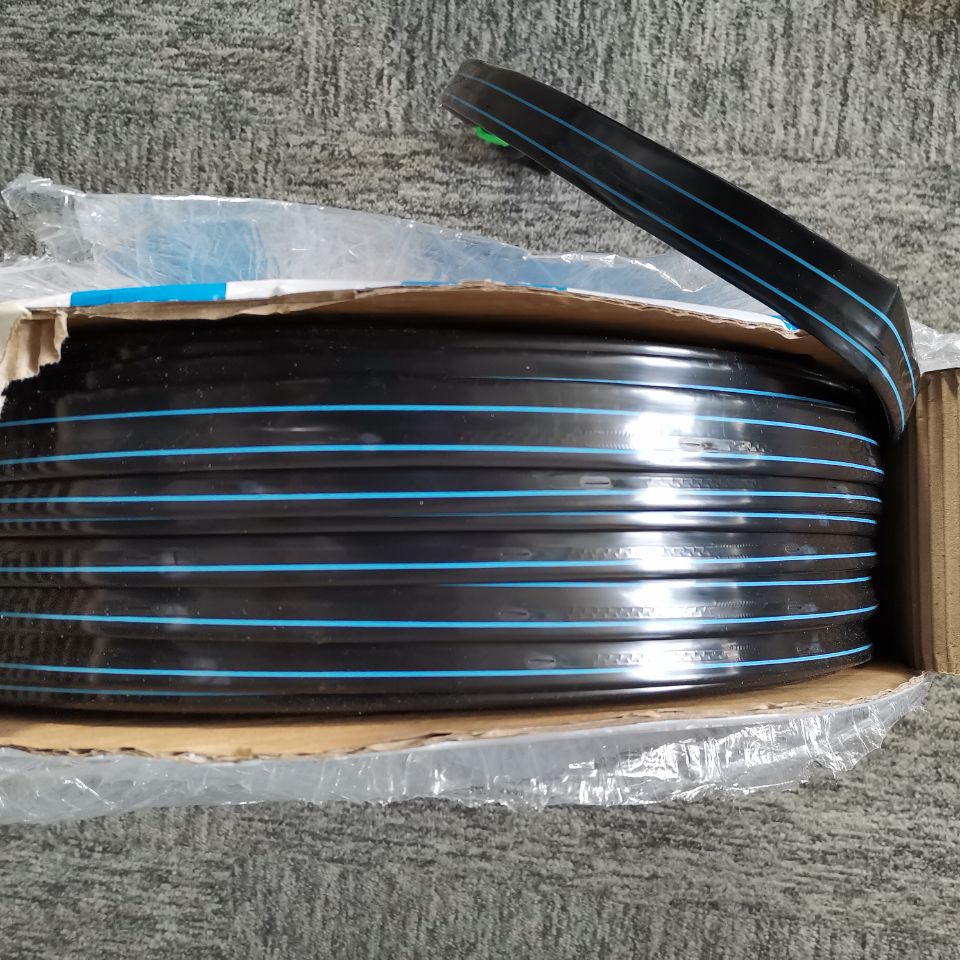Multy Inlet Dripper Tape is designed to ensure uniform water distribution to plants over its length through a combination of design features and careful engineering.
Here’s how it achieves this uniformity:
- Multiple Inlets: Multy Inlet Dripper Tape is equipped with multiple inlets or emitters along its length. These inlets are evenly spaced and precisely designed to release water or irrigation fluid at a consistent rate.
- Labyrinth Design: Many Multy Inlet Dripper Tapes use a labyrinth design inside the tape. The labyrinth consists of a winding, tortuous path that the water follows before reaching the emitters. This design ensures that water flows uniformly and that the pressure is balanced throughout the tape.
- Self-Compensating Emitters: Some Multy Inlet Dripper Tapes have self-compensating emitters. These emitters are engineered to maintain a consistent flow rate, even when there are variations in pressure or elevation along the tape. This feature helps ensure uniform water distribution.
- Pressure Regulation: Pressure regulation mechanisms are often integrated into the Multy Inlet Dripper Tape to maintain a steady pressure, which is essential for consistent flow rates. These mechanisms prevent excessive pressure from causing certain emitters to release too much water while compensating for low-pressure areas.
- Equal Spacing: The spacing between the emitters along the tape is designed to provide even coverage. Typically, the spacing is uniform to ensure that plants receive water evenly along the entire length of the tape.
- Dripper Configuration: Multy Inlet Dripper Tape can have various emitter configurations, such as inline or online emitters. These configurations are carefully designed to disperse water in a way that covers a specific area evenly.
- Regular Maintenance: Keeping the tape and emitters clean and free from debris is essential for maintaining uniform water distribution. Regular maintenance includes flushing the system, cleaning the emitters, and ensuring there are no blockages.
- Proper Installation: Correct installation of the tape with the recommended spacing and depth ensures that water is distributed uniformly to the plants. Proper tension and support for the tape are also essential for consistent performance.
- Monitoring and Adjustments: Regular monitoring of the system and adjustments to flow rates and pressure are necessary to account for changes in environmental conditions and plant water requirements.
- Customization: Multy Inlet Dripper Tape can often be customized to match specific crop types, plant spacing, and field layouts. Tailoring the tape to the specific needs of the application contributes to uniform water distribution.
By combining these design features and practices, Multy Inlet Dripper Tape can achieve uniform water distribution, making it an effective and efficient choice for precision irrigation in agriculture and horticulture.
What maintenance procedures are necessary to ensure the efficient and long-lasting operation of this type of tape?
To ensure the efficient and long-lasting operation of Multy Inlet Dripper Tape, regular maintenance procedures are necessary. Proper maintenance helps prevent clogs, ensure uniform water distribution, and extend the lifespan of the tape.
Here are the key maintenance steps:
- Flushing the System: Periodically flush the entire irrigation system to remove sediment, debris, and mineral deposits that can accumulate in the tape. Flushing helps maintain consistent flow rates and prevents clogs.
- Cleaning Emitters: Check and clean the emitters or inlets along the tape. Use a soft brush or a cleaning solution recommended by the manufacturer to remove any debris, sediment, or mineral deposits that can obstruct water flow.
- Filter Maintenance: Regularly clean and maintain the system’s filters to prevent them from becoming clogged. Clean or replace filters as needed to ensure a steady flow of clean water.
- Pressure Regulation: Ensure that the water pressure in the system is within the recommended range for the specific Multy Inlet Dripper Tape you are using. Pressure that’s too high can cause damage or uneven water distribution.
- Leak Detection: Regularly inspect the tape for any leaks, cracks, or damage. Address any issues promptly to prevent water wastage.
- Alignment and Tension: Check that the tape is properly aligned and tensioned to maintain consistent spacing and prevent sagging or kinking.
- UV Protection: If the tape is exposed to direct sunlight, consider using UV-resistant tape or covering it with protective material to prevent UV degradation.
- Proper Storage: During the off-season or when the tape is not in use, store it in a clean, dry, and protected environment. Protect it from extreme temperatures and UV exposure.
- Winterization: In areas with freezing temperatures, take steps to protect the tape from damage during the winter. Drain the system or use insulated covers as needed.
- Record Keeping: Maintain records of maintenance activities, including flushing schedules, Multy Inlet Dripper Tape repairs, and replacements, to help with future maintenance planning and troubleshooting.
- Training: Ensure that personnel responsible for maintenance are properly trained and understand the procedures for inspecting, cleaning, and maintaining the Multy Inlet Dripper Tape and the entire irrigation system.
Proactive maintenance is critical to the efficient and long-lasting operation of Multy Inlet Dripper Tape. By following these procedures and staying vigilant in caring for your irrigation system, you can maximize the performance and lifespan of the tape, resulting in more effective and cost-efficient irrigation. Always refer to the manufacturer’s guidelines for specific maintenance procedures related to your tape.
